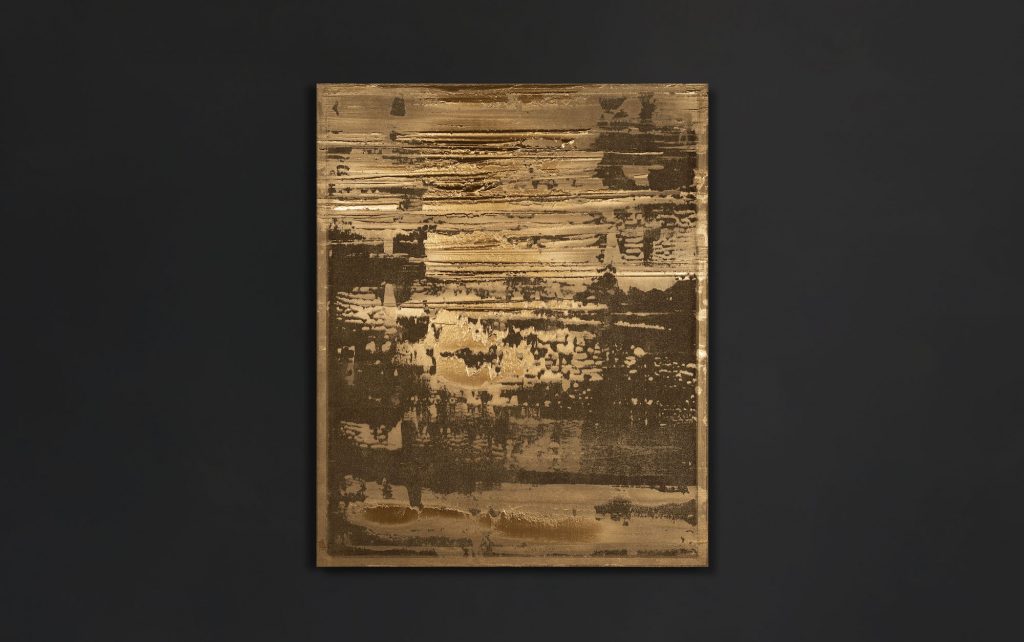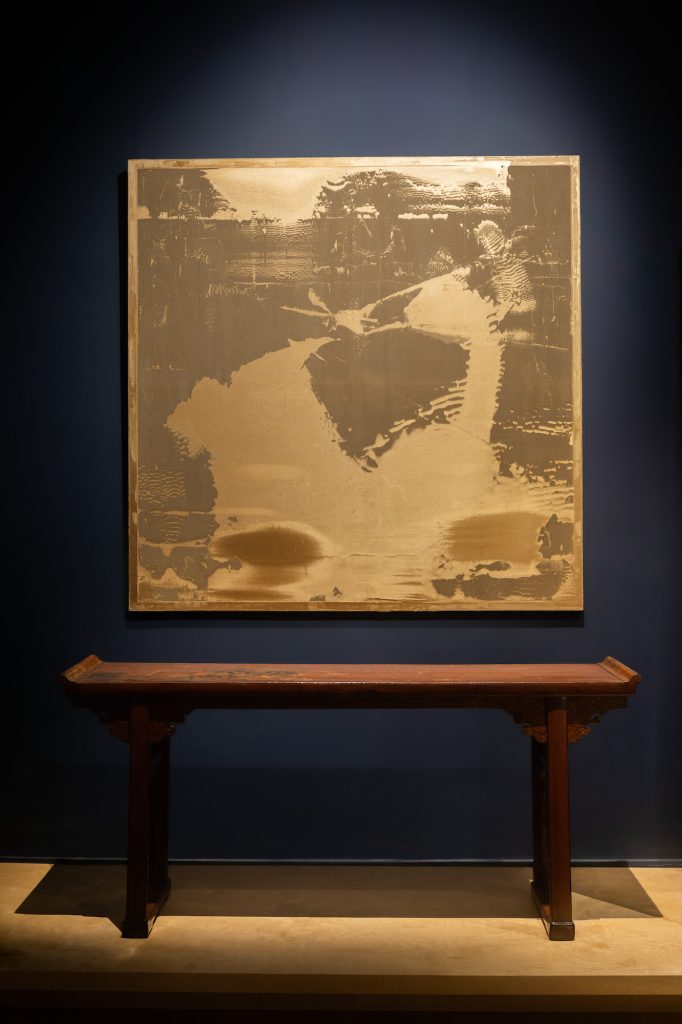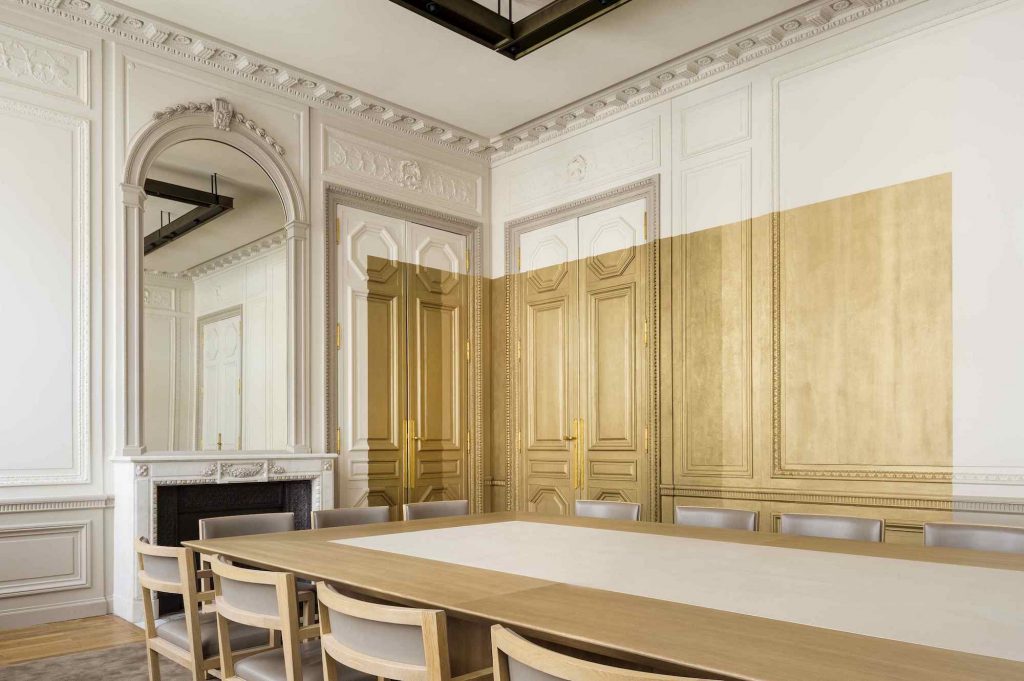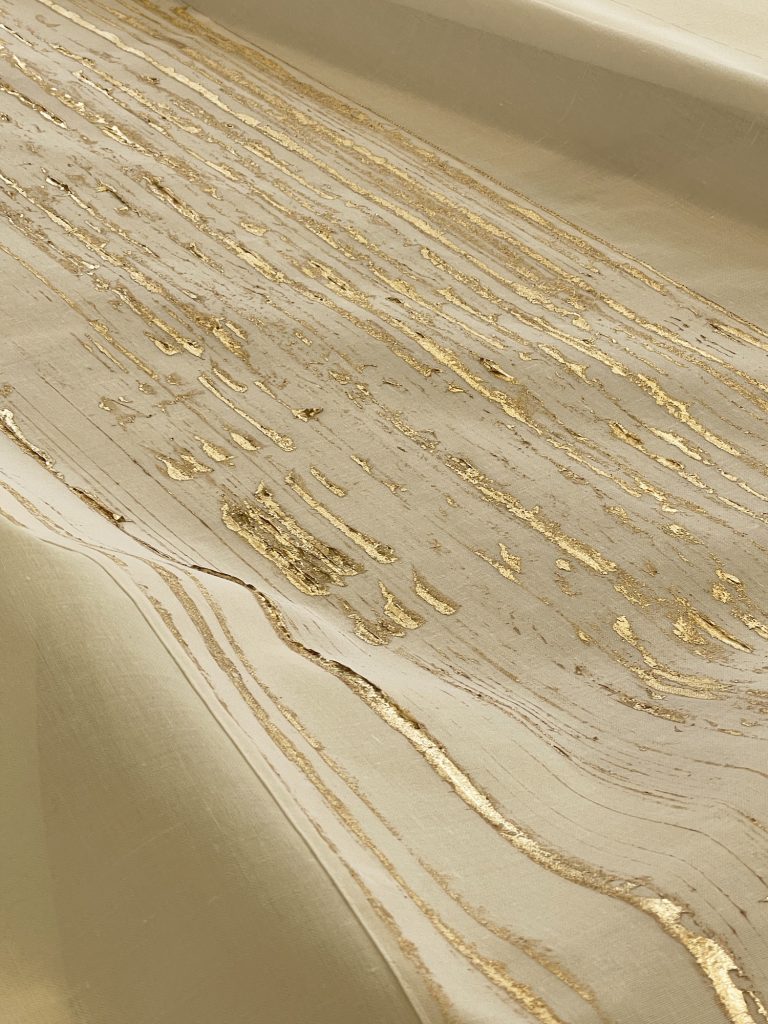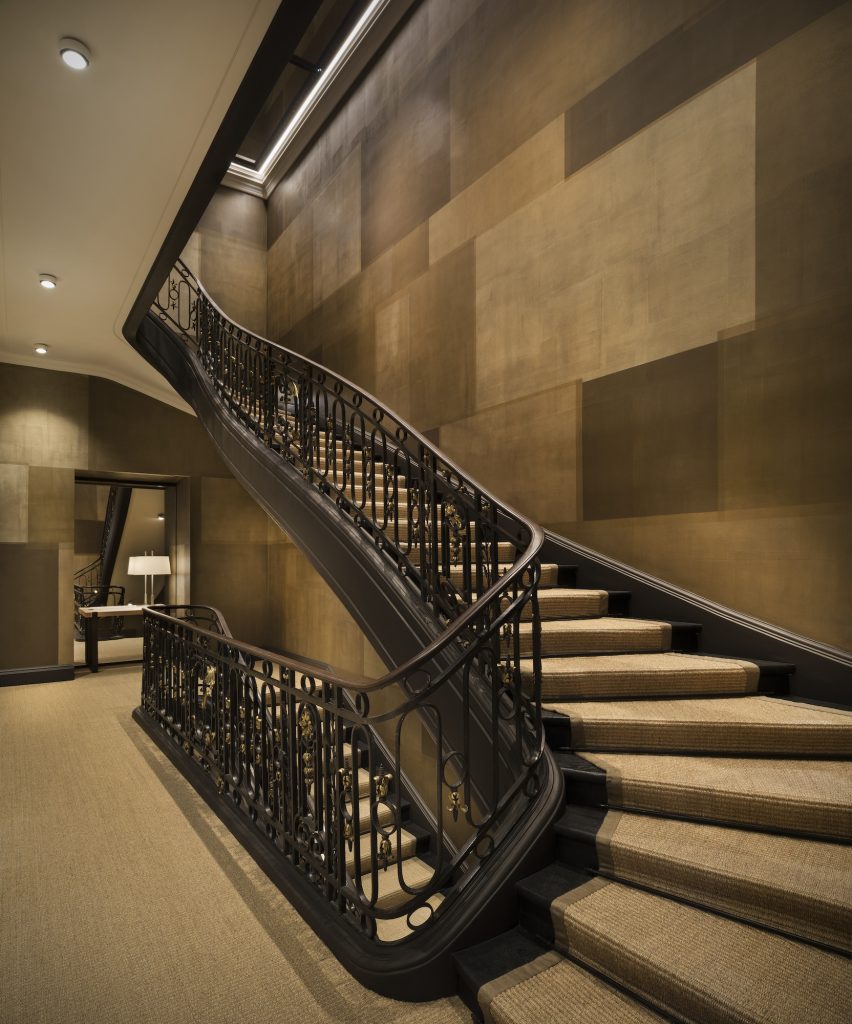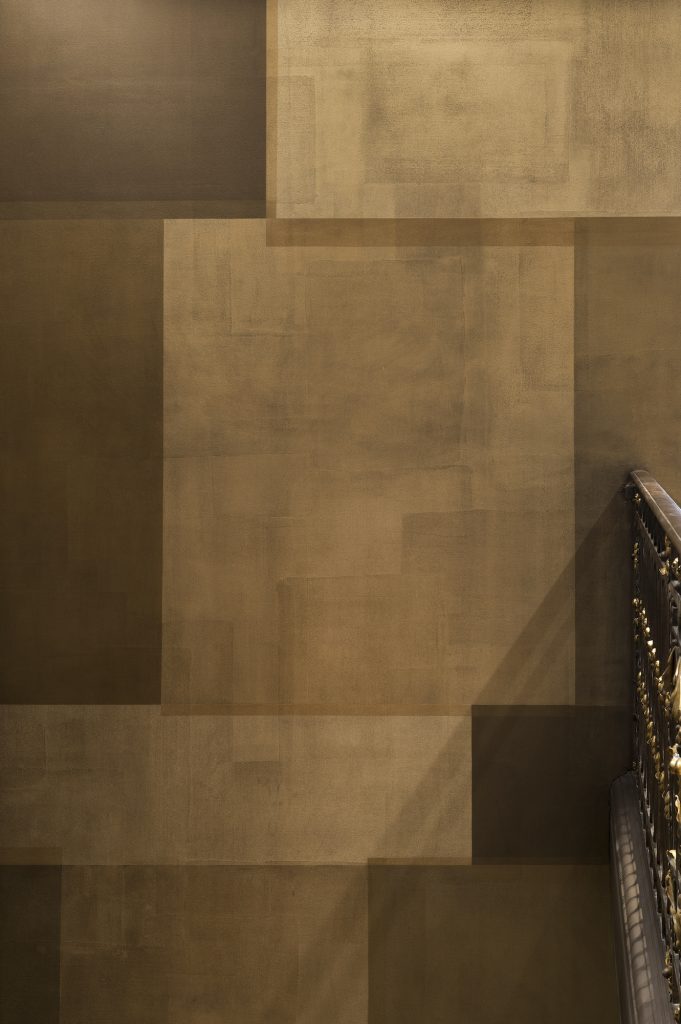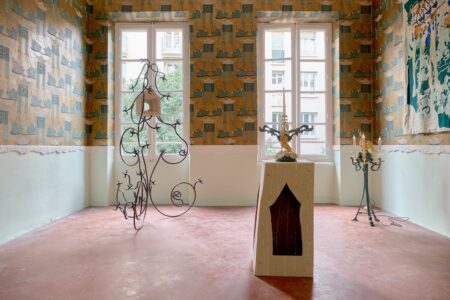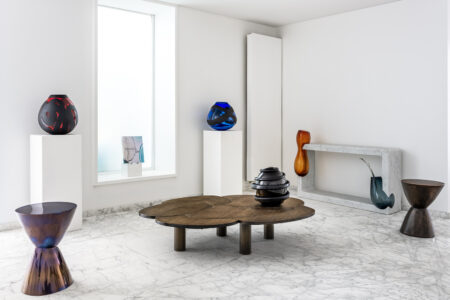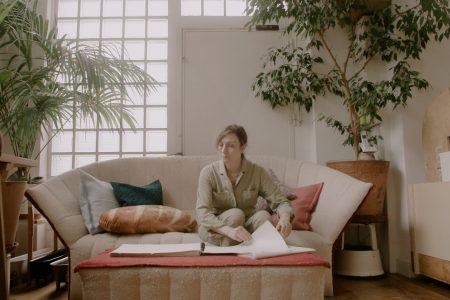Pierre Bonnefille: The Light of Gold
For our S/S 2022 issue: TLmag37: L’age d’or / State of Gold, Oscar Duboÿ interviewed French artist, Pierre Bonnefille, about his love of travel and long-time interest in exploring materiality, light and colour through earthy pigments.
Whether applied to a canvas, a wall or a piece of furniture, there are no limits to the mastery of French artist, Pierre Bonnefille, in enhancing pigments and bringing out all their materiality. And if there is one material in which he excels, it is gold.
TLmag: Gold is an important part of your work today. Was this the case when you began your career in 1985?
Pierre Bonnefille: My first works were centred around earth-toned colours such as red or brown. I travelled the four corners of the world looking for rare colours: in Italy, Belgium and then Asia. Above all, I was seeking what interested me in terms of the relationship between colour, material and light.
TLmag: How did this subsequent appetite for gold develop? Even if it is sometimes actually bronze or copper…
P.B.: Everything comes first and foremost from the earth, where you can find preciousness and plenty of nuggets. I began collecting and observing specimens of native rocks. The notion of transformation is the basis of my work, hence the name ‘Metamorphosis’ for my furniture collection. These rocks become powder and take on a new life through my process, which involves both transforming the material and reinventing it through successive layers, through smoothing, sanding, etc. I like to invent materials according to my visual inspirations, but also touch, look and especially through light.
TLmag: The natural origin of your pigments seems out of step with the connotations of gold, which is usually associated with luxury and artifice. Are you comfortable with this paradox?
P.B.: My installation at the Hôtel d’Heidelbach, [in connection with the] Guimet National Museum of Asian Arts in Paris, was not at all ostentatious; on the contrary, it was based on the sacred, in an ode to light. I don’t use gold for its market value, or to make it seem rich or ‘blingy’. Certainly, you can make glitz with gold, but what interests me is its vibratory dimension, which is about light and the power of various reflections. My series of ‘Bronze Paintings’ is a play between bronze powder and gold leaf, with the aim of capturing this light, but there are also other monochromes, [for example] my work about the reflection of water in ice, silver, moonsets… When I focus on gold, I mainly work on the informality, a material that I imagine emerging from the earth before becoming a reflection. Hence this very textured thickness which remains frozen on the canvas, as if it had been left to flow before being stopped, but which is actually very controlled. I look for an effect of evanescence and mist from the imagination of my memory.
TLmag: Your installation at the Élysée Palace is in a very bright environment, while the ‘Meditation Room’ at the Guimet National Museum of Asian Arts was plunged in darkness. These are two diametrically opposed uses of gold.
P.B.: Yes. At Guimet, the idea was for the golden light to come to you, and very slowly stimulate a contemplation that creates incredible energy with this pleasant sensation of a precious thing. Together with the museum’s director, Sophie Makariou, we had the idea of launching a conversation with the existing rooms in addition to the ‘Meditation Room’. In other words, a conversation with old stories. For example, there was one screen in gold, others with precious lacquers, another cabinet entirely covered in gold with very beneficent dragons. My paintings thus punctuated these spaces, while the great work was illuminated from within. These are two aspects of gold are sometimes treated in a dynamic way, as with the triptychs which are in light, and sometimes in the dark when only a few elements are lit up.
TLmag: It is a tool that you adapt to all situations. Would you get the same effectiveness with other hues?
P.B.: It is incomparable. With earthy colours, I would not work on reflection, but rather on depth, softness, intensity, materiality. On the other hand, gold, and this very particular support that I use, allows me to have both a matte, immaterial gold, and at the same time something that exists in relief. In 1 cm, I can work on distance and foreground. As you draw near, the colour changes due to its brilliance. This is what I find very moving, because the work can be lit by full sunlight or with a candle. I remember, for example, a Portuguese church in Ouro Preto, Brazil, that was completely covered in gold with all the Baroque characteristics of the time; you enter into a dimly lit church, and then everything lights up. I have a strong memory this emotional experience with the gold, this saturation. I was just 22…
TLmag: Before being a colour, gold would above all be a glow, a light…
P.B.: Absolutely. We can also talk about the colour of gold in terms of alloys: a mixture with silver or copper, red gold and all the rest of the palette: green, lemon yellow, etc. There are several colours of gold that have been worked throughout the history of art, depending on the styles of the times.
pierrebonnefille.com
@pierrebonnefille
